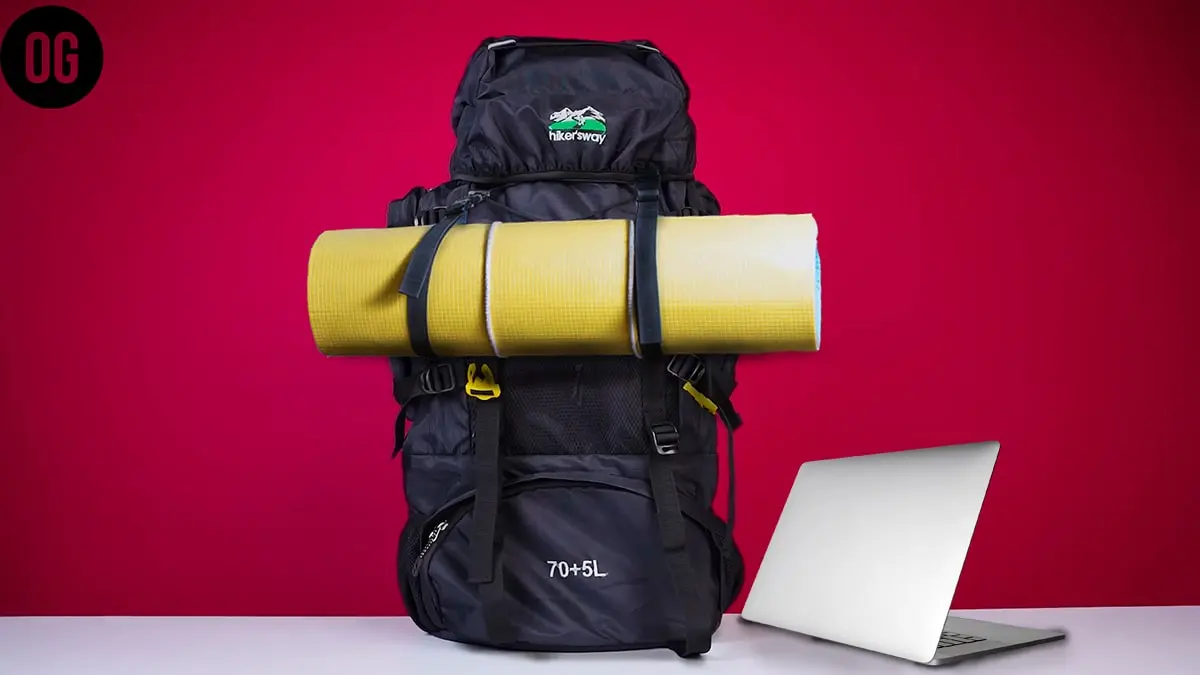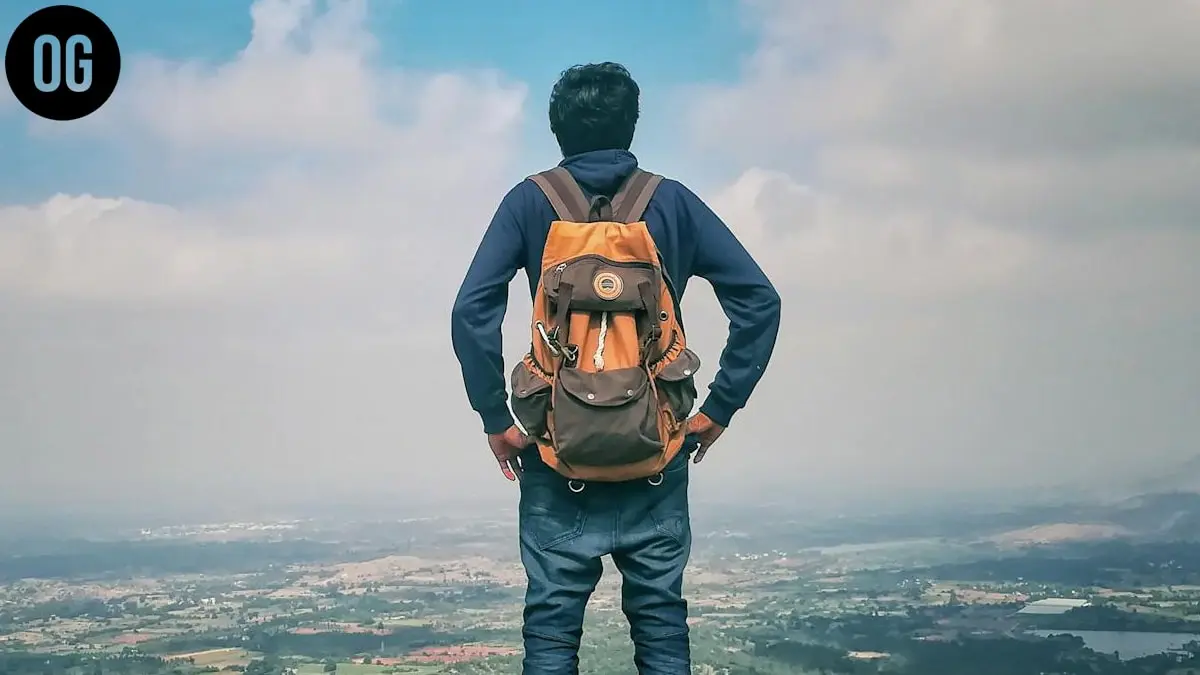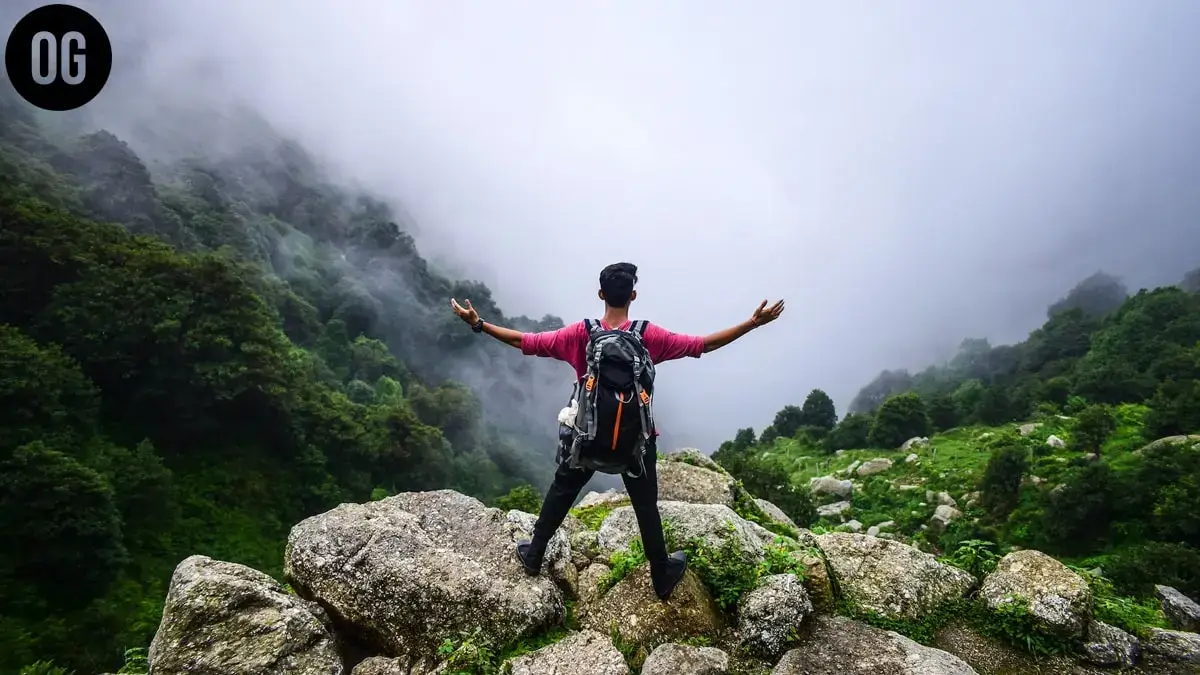Pitching The Perfect Experience With 13 Different Types of Tents Used For Camping
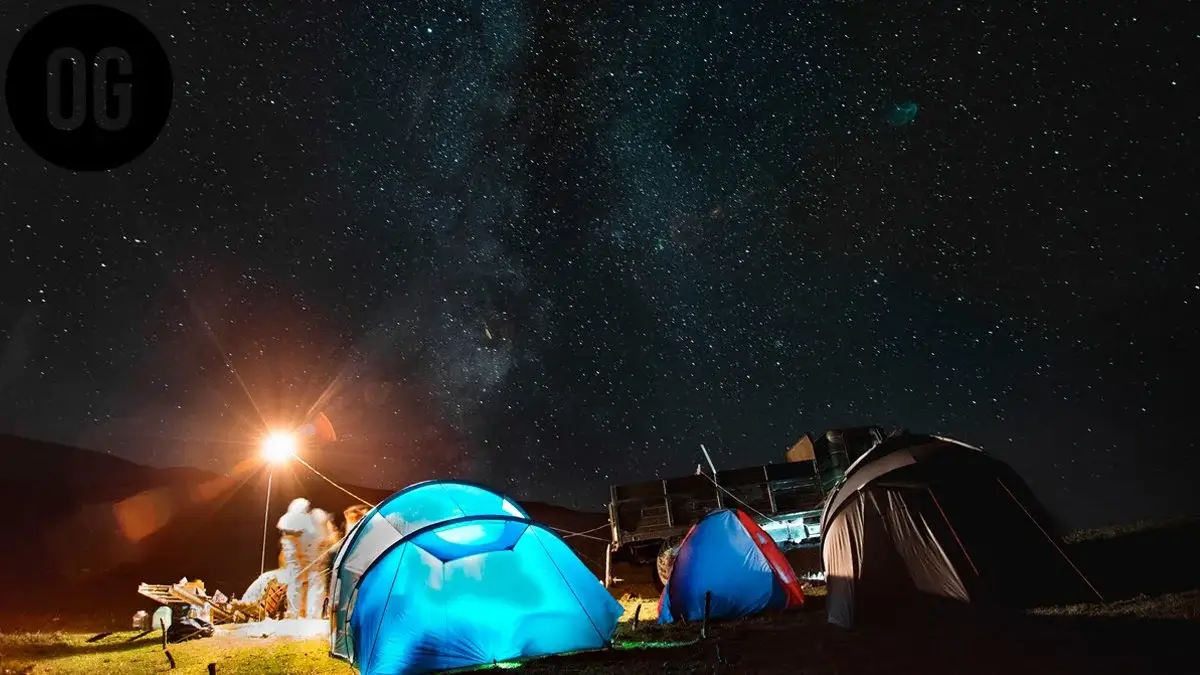
There are different types of tents used for camping like Dome tents, backpacking tents, family tents, and many more. The appropriate kind of tent may greatly improve the camping experience, which is an immersive way to explore nature. Your temporary residence, a haven from the elements, and a comfortable spot to unwind are all provided by the tent. There are different types of tents used for camping in various situations. Understanding these different camping tent types will help you choose the best tent for your upcoming outdoor excursion, assuring comfort, safety, and a satisfying camping experience.
Table of Contents
Related: 7 Best Tents For Camping And Backpacking
Importance of Choosing The Right Tent For Camping
Making the appropriate tent choice is essential to having a relaxing, secure, and pleasurable camping trip. A tent serves as more than just a place to sleep; it also serves as a location to keep your equipment and a haven from inclement weather. Therefore, considerations should extend beyond only appearance and cost.
The tent’s size is crucial, to start. It should have enough room to comfortably fit campers and their belongings. An uncomfortable and stressful experience may result from a crowded tent. Larger tents allow for greater movement but keep in mind that they may also be more difficult to set up and heavier to carry.
The tent’s weight is especially critical for backpacking treks, where every ounce counts. Ultralight tents are made for these uses, balancing comfort and weight to guarantee a manageable load during lengthy trips.
Additionally, several tents are made to resist a range of weather situations. For example, 3-season tents are intended for use in the spring, summer, and fall and can withstand light snow, but 4-season tents are made to withstand severe winter weather. You can read our excellent article on the difference between 3-season and 4-season camping tents.
The tent’s layout is also important. Tunnel tents give a great space-to-weight ratio, dome-style tents offer strong wind resistance and headroom, and geodesic tents are very stable in inclement weather.
The material of the tent, its strength, and how simple it is to set up are further important considerations. The choice of the appropriate tent is a crucial element of a good camping trip since all these factors work together to affect your entire camping experience.
Overview of The Different Types of Tents Available
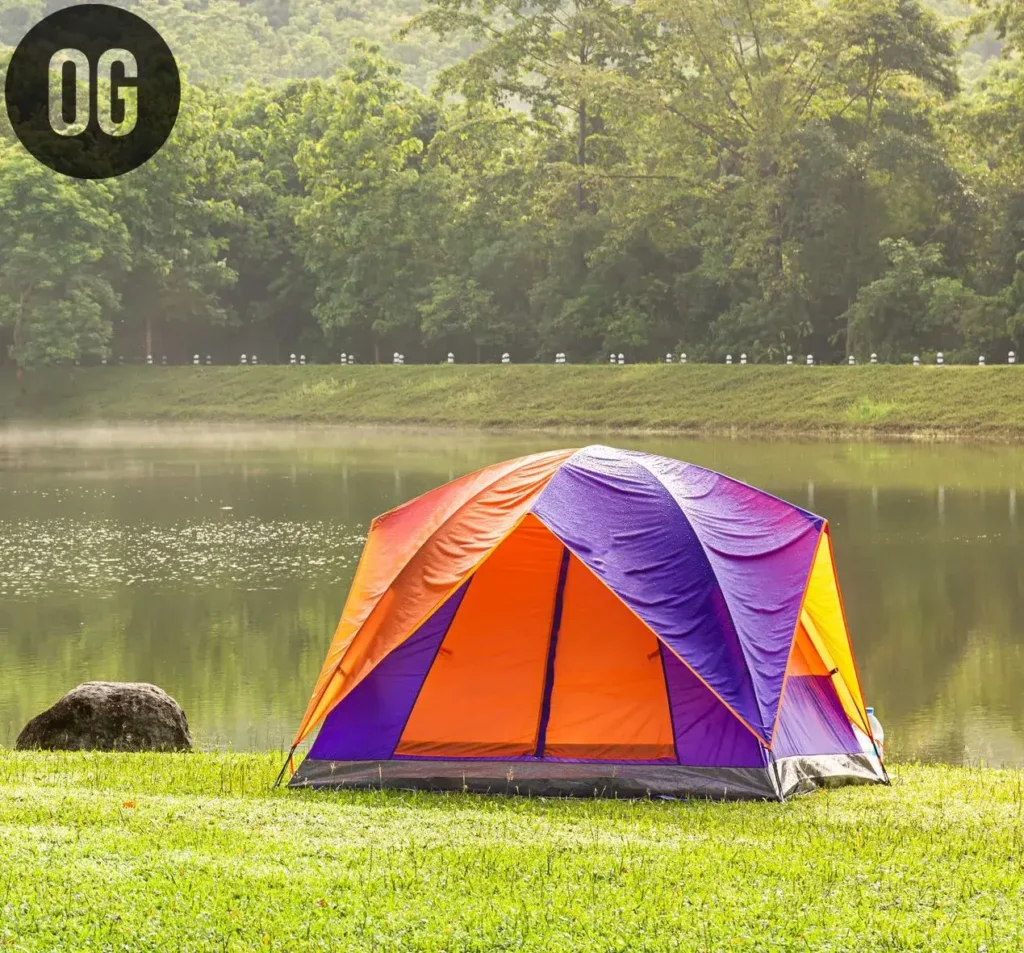
Dome Tents
Dome tents are adaptable structures used for outdoor activities like camping. They stand out for their dome-like shape, which is a result of flexible poles intersecting to form a freestanding structure. The dome tent’s structure provides stability, a generous interior, and simple setup.
Dome tents are advised for family camping and trekking excursions. They are well-liked by travelers who value portability due to their lightweight design and simple setup. They are made for three-season use and may be used for camping in the spring, summer, and fall.
Moderate weather, including mild to moderate wind and rain, is good for camping with dome tents. They function effectively in these circumstances, providing decent protection and ventilation. Dome tents, however, might not be the ideal option in cases of harsh weather, such as deep snowfall or brisk winds.
Advantages of Dome Tents:
- Stability: Because of their geodesic construction and crisscrossing poles, dome tents are renowned for their stability and capacity to endure windy conditions.
- Large internal room: The dome tent’s curved design enhances internal room.
- Simple Setup: Setting up a dome tent is not difficult or time-consuming.
- Versatility: Dome tents are available in a range of sizes, from big family tents to single tents, to suit varied camping requirements.
- Dome tents often come with a variety of ventilation options, such as mesh panels and windows, which improve circulation and lessen condensation within the tent.
Disadvantages of Dome Tents:
- Limited Headroom: Even though dome tents offer greater headroom than some other tent designs, larger people may still need to squat or bend within the tent, which can be uncomfortable during long excursions.
- Less Stable in Extreme Weather: In really severe weather, such as heavy snowfall or high winds, dome tents may not function as well.
- Dome tents, especially bigger ones, maybe heavier and bulkier to pack than other lightweight tent alternatives.
- Due to their footprint, dome tents need enough level ground space to be put up.
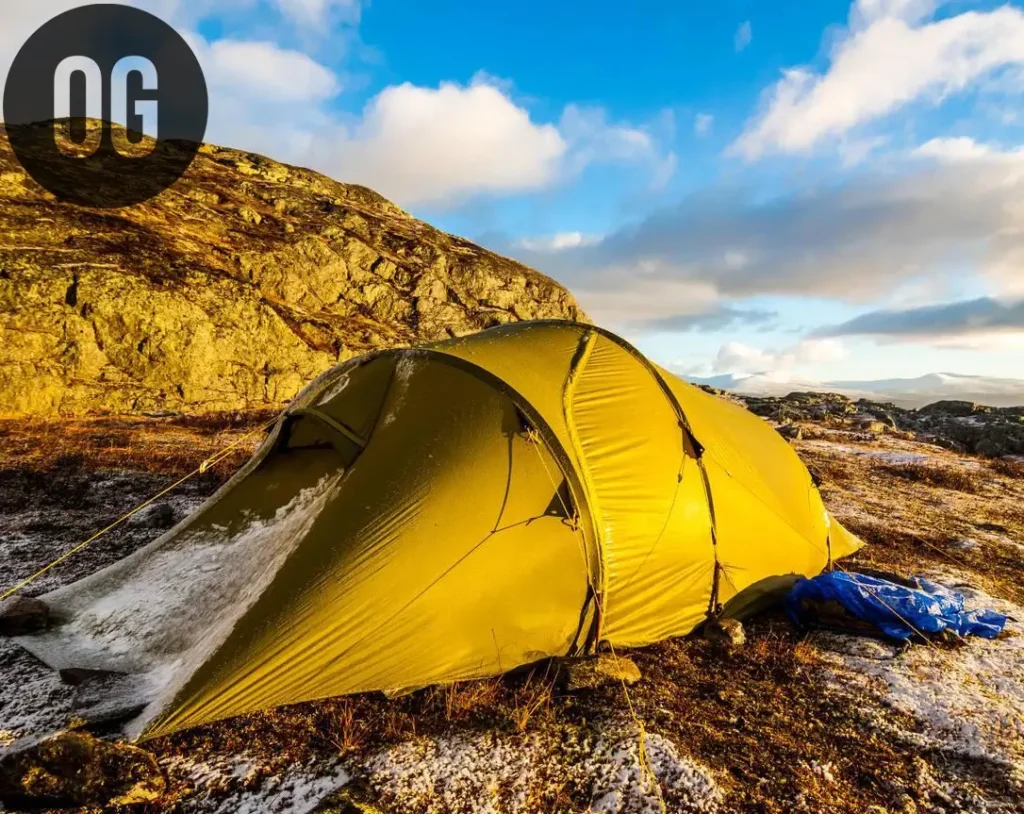
Tunnel Tents
Popular camping shelters known as tunnel tents have an extended design that resembles a tube or cylinder. These tents are supported by a network of flexible poles that form a tunnel-like structure running parallel to one another. Typically having two ends, tunnel tents provide a large interior living area.
Family camping, base camping, and extended camping vacations are all recommended applications for tunnel tents. Because of their extended structure, there is plenty of area for sleeping, storing equipment, and even setting up furniture to create different rooms.
Weather that is calm to mild makes for the best camping circumstances for tunnel tents. They are more wind-prone because of their elongated design, and in strong gusts, they could not be as sturdy as dome tents. The three-season use of tunnel tents makes them ideal for use while camping in the spring, summer, and fall.
Advantages of Tunnel Tents:
- Spacious Interior: Tunnel tents have a roomy inside, making them perfect for extended journeys or camping with families.
- Multiple Rooms: A lot of tunnel tents have several rooms or divisions.
- Enhanced Ventilation: Tunnel tents frequently include several windows, vents, and mesh panels, which greatly improve ventilation and circulation.
- Easy Setup: Tunnel tents are often simple to erect thanks to their simple pole arrangements and color-coded parts.
Disadvantages of Tunnel Tents:
- Stability in High Winds: In comparison to dome or geodesic tents, tunnel tents may be less sturdy in strong winds.
- Setup Space: Tunnel tents’ extended design needs a bigger setup area than other tent types.
- Bulk and Weight: Compared to smaller tents or lightweight solutions, larger tunnel tents may be heavier and thicker.
- Less Freestanding: For optimum assembly and stability, tunnel tents sometimes need strong anchoring or man lines. This might restrict their capacity to adapt to specific camping situations, such as rocky terrain or sandy beaches where staking can be challenging.

Cabin Tents
Cabin tents are roomy, cozy, and frequently used for camping and other outdoor activities. Because of their vertical walls, which offer plenty of headroom and a more vertical living area than other tent designs, they are known for their resemblance to a typical cabin. The floor of a cabin tent is normally rectangular or square, and it is supported by a strong pole framework.
Family camping, group camping, and vehicle camping are all suggested applications for cabin tents. Vertical walls and a roomy interior allow for roomy sleeping configurations as well as the freedom to stand up and move around within the tent.
Weather that is calm to mild makes for the best camping circumstances for cabin tents. Despite their vast size and vertical walls, cabin tents may be more wind-prone than dome or tunnel tents, even though they may offer great shelter and protection from the weather.
Advantages of Cabin Tents:
- Spacious Interior: Cabin tents have roomy interiors with vertical walls that provide them plenty of headroom and pleasant living space.
- Standing Height: Cabin tents’ vertical walls make it possible for campers to stand up and walk around the interior with ease.
- Room dividers: A lot of cabin tents come with room dividers that let you split the interior of the tent into separate sleeping or living spaces.
- Equipment Storage: The spacious floor area of cabin tents makes it easy to store camping supplies and equipment.
- Improved Ventilation: Cabin tents frequently include many windows, mesh panels, and vents that encourage airflow and ventilation, which lowers condensation and keeps the inside atmosphere fresh.
Disadvantages of Cabin Tents:
- Bulk and Weight: Compared to smaller tent types, cabin tents are often bigger and heavier.
- Setup Difficulty: Cabin tents can be more time-consuming to set up because of their bigger size and intricate pole arrangements.
- Wind Resistance: Cabin tents may be more vulnerable to wind because of their substantial vertical walls.
- Pack Size: Cabin tents can be thicker when packed due to their size, necessitating additional room for storage and transit.
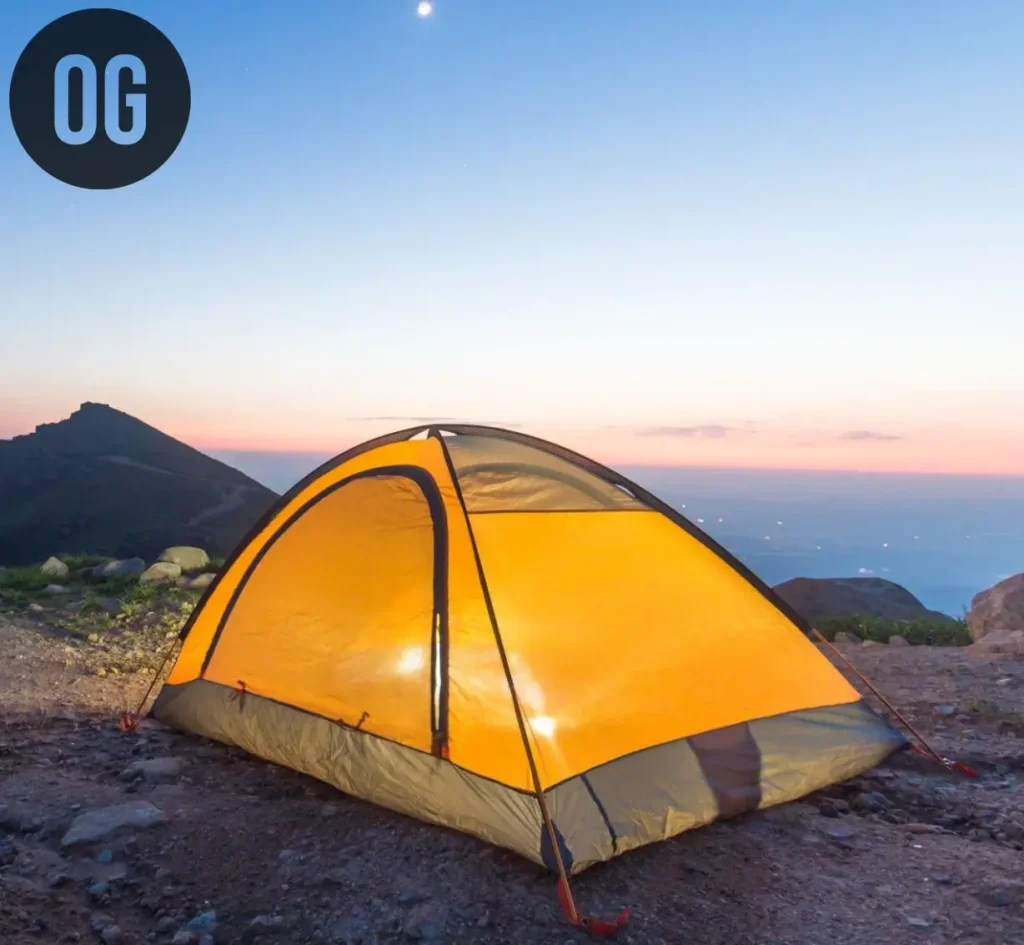
Backpacking Tents
Backpacking tents are small, light shelters made primarily for hiking and backpacking excursions. These tents put an emphasis on portability and simplicity of movement, making them perfect for explorers who must carry their shelter on their backs.
Backpacking tents are characterized by lightweight components, such as nylon or polyester, and a small shape that makes putting them into a backpack simple. They generally consist of a freestanding or semi-freestanding structure supported by thin poles. With straightforward pole arrangements and color-coded parts, backpacking tents are intended to be quick and simple to erect.
Multi-day hikes, thru-hikes, and simple camping are all recommended applications for backpacking tents. For travelers who value weight reduction and constrained pack space, their lightweight design and small dimensions make them the perfect choice.
For backpacking tents, three-season use, which encompasses spring, summer, and fall, is the best camping scenario. They offer sufficient defense against light winds and precipitation. However, under extreme weather conditions like deep snowfall or ferocious winds, backpacking tents may not be as effective.
Advantages of Backpacking Tents:
- Lightweight: Backpacking tents are made to be light, which makes them portable and ideal for extended hikes or backpacking excursions.
- Compact Size: These tents are made to fold up into a compact size that makes it simple for them to fit into a backpack.
- Portability: The lightweight and compact design of camping tents contributes to their great portability.
- Quick Setup: Easy and Quick Setup: Backpacking tents are usually made to be put up quickly.
- Durability: Backpacking tents, despite their lightweight construction, are frequently composed of strong materials that can survive the rigors of outdoor use and offer dependable shelter for lengthy journeys.
Disadvantages of Backpacking Tents:
- Limited Space: Backpacking tents often have a small interior due to their lightweight and compact construction.
- Minimalist Features: As the emphasis is on lowering weight and pack space, backpacking tents may have fewer features and less pleasant amenities than bigger camping tents.
- Weather restrictions: While hiking tents are acceptable for normal three-season weather, they might not be as effective in really bad weather.
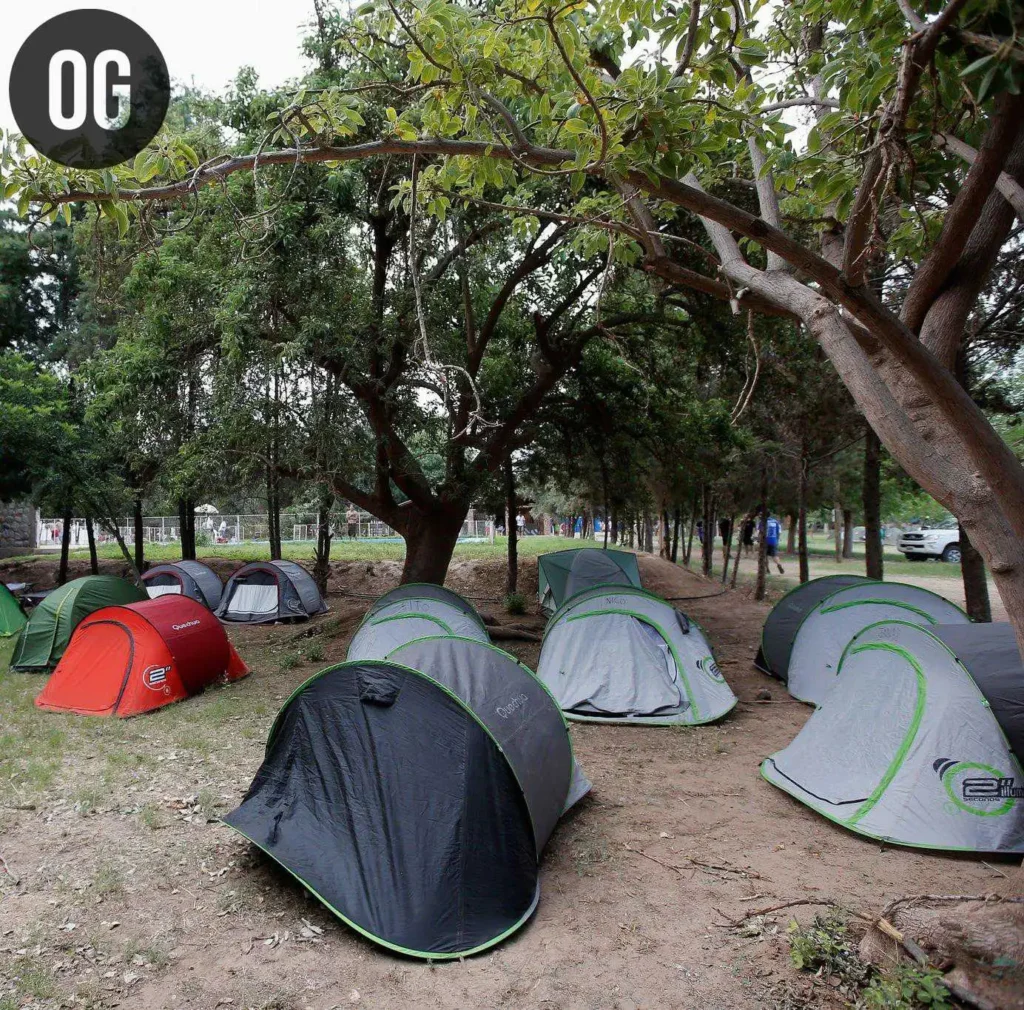
Pop-Up Tents
Pop-up tents, commonly referred to as instant tents or quick-pitch tents, are shelters that are easy to erect quickly. When removed from their storage bags, these tents instantly expand and assume their shape thanks to a built-in structure.
They are often composed of strong, lightweight fabrics like nylon or polyester. Pop-up tents are useful for campers who value rapid and hassle-free installations since they frequently include integrated poles that reduce the need for human construction.
Pop-up tents are suggested for use on short camping excursions, during events, on beach outings, or as a handy supplementary shelter.
In general, calm weather makes for the best camping circumstances for pop-up tents. Pop-up tents may be put up quickly, but they might not be as sturdy or stable as conventional tents in strong winds or pouring rain.
Advantages of Pop-Up Tents:
- Quick and Easy Setup: These tents are extremely simple to erect and take very little time.
- Portability: Because they are lightweight and include a compact carry bag, these tents are very easy to transfer from one location to another.
- Convenient for Short Trips: Pop-up tents are perfect for short trips, outdoor occasions, or circumstances when campers often move between locations.
Disadvantages of Pop-Up Tents:
- Limited Durability: Pop-up tents are frequently manufactured with lighter materials and have a simpler design, which may make them less durable than traditional tents. They can be more susceptible to damage over time.
- Limited Interior Space: Pop-up tents often have a small interior that may not offer enough living or headroom.
- Weather Limitations: Pop-up tents may not be as suited in cases of extreme weather, such as torrential downpours or strong winds.
- Less Customization: Due to their rapid and simple erection, pop-up tents sometimes offer few modification options, such as the inability to add extra vestibules or change the tent’s layout.
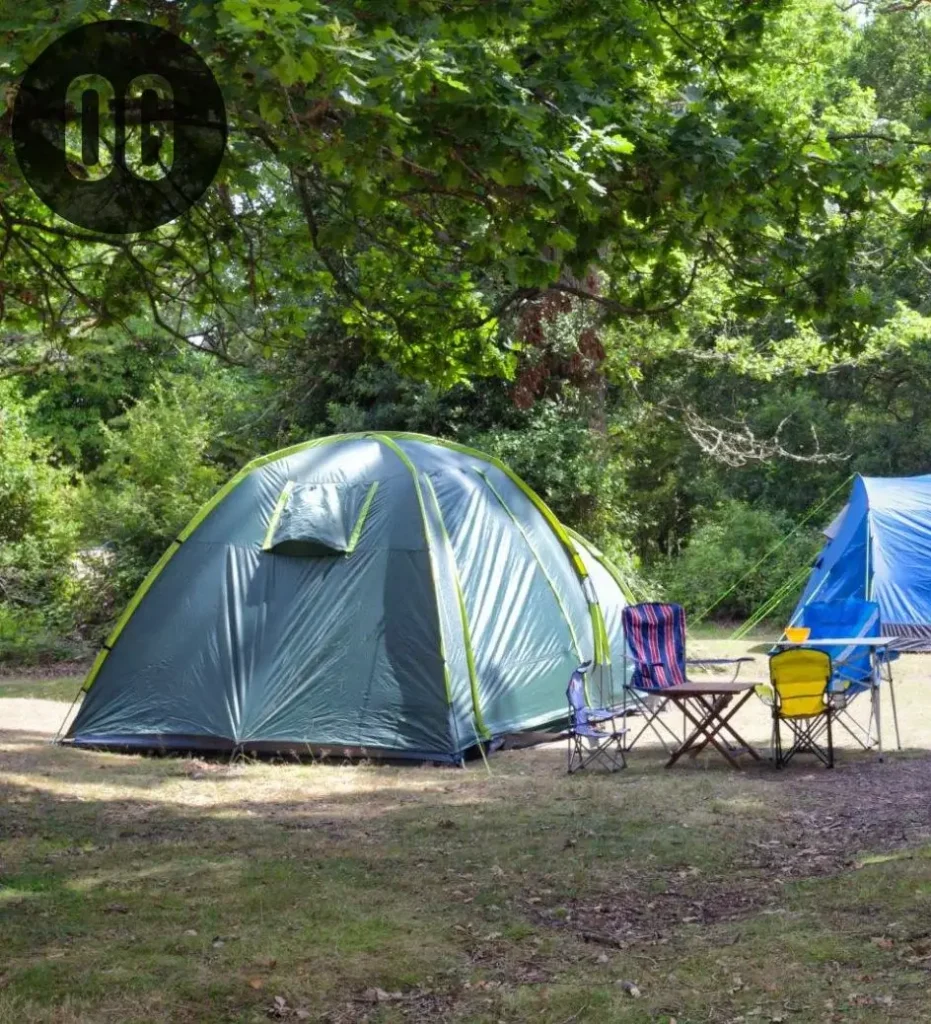
Family Tents
Family tents are roomy structures made to hold several people on camping vacations or other outdoor activities. These tents often include a spacious interior that is separated into individual sleeping quarters and a main living area. To enhance comfort and security, they frequently include extra features like built-in storage pockets, ventilation systems, and waterproof materials.
Family tents provide ample room for everyone to sleep and relax comfortably, making them ideal for camping vacations with bigger groups or families. Camping areas, national parks, and outdoor gatherings for families frequently utilize these tents.
Mild weather with little wind and precipitation are ideal camping conditions for family tents. They work well in moderate climes and, because to their waterproof materials, can also resist brief downpours.
Advantages of Family Tents:
- Spaciousness: Family tents provide enough room for everyone to move and sleep comfortably.
- Convenience: Family tents are made to be simple to put up. Many versions have easy-to-follow construction instructions and poles that are color-coded, making them quick and simple to pitch. After a long day of travel, this convenience is especially useful while setting up the tent.
- Shared Experience: Camping with your family in a tent fosters camaraderie and shared experiences. It enables families to spend time together, participate in activities, and make enduring memories in a group environment.
- Versatility: Family tents are adaptable and appropriate for a variety of outdoor activities besides camping, such as backyard sleepovers, festivals, or lengthy travels.
Disadvantages of Family Tents:
- Size and Weight: While the spaciousness of family tents is advantageous, it also means they tend to be larger and heavier than smaller tents. This can pose challenges regarding transportation and storage, particularly for those with limited space or traveling by foot.
- Setup Complexity: Although many family tents are designed for easy setup, some models can be more complex and time-consuming, requiring multiple people to assemble.
- Limited Portability: Due to their size and weight, family tents are less portable than smaller tents.
- Cost: Family tents generally come with a higher price tag compared to smaller tents.

Teepee Tents
A traditional type of shelter that resembles a cone-shaped construction is a teepee tent, sometimes referred to as a tipi tent. It generally has a conical shape with a large interior and is supported by a central pole. To combine durability and ventilation, teepee tents are frequently built of lightweight, breathable fabrics like canvas or polyester.
Teepee tents are advised for outdoor activities like camping and trekking. They are especially well-liked by singles or little groups looking for an uncommon camping adventure.
Mild to moderate weather with little wind and precipitation is ideal for camping with teepee tents. They function well in favorable weather and offer decent ventilation, making them appropriate for camping vacations in the spring or summer.
Advantages of Teepee Tents:
- Large and Comfortable: Teepee tents have a roomy interior that allows people to move about freely and comfortably. They are perfect for individuals or small parties looking for plenty of living and sleeping space because of its conical design and high ceilings, which create a spacious environment.
- Ventilation: Due to their open shape, teepee tents often provide good ventilation. The top smoke hole promotes effective ventilation, which lessens condensation and keeps the interior airy and breathable.
- Aesthetically Pleasing: Teepee tents provide a distinctive and aesthetically pleasing camping experience. They are well-liked by campers looking for a more rural and traditional camping experience because of their classic style, which adds a touch of charm and fosters a warm atmosphere.
Disadvantages of Teepee Tents:
- Limitations caused by the weather: Severe weather may cause teepee tents to malfunction. They are less effective in heavy rain, high winds, or low temperatures due to their single-layer construction and open structure.
- Weight and portability: When compared to other tent types, teepee tents might be larger and heavier. Particularly for campers or hikers who emphasize lightweight equipment, this may make them less transportable and more difficult.
- Limited Privacy: Since there are no distinct rooms or walls, the open style of teepee tents may impair privacy.
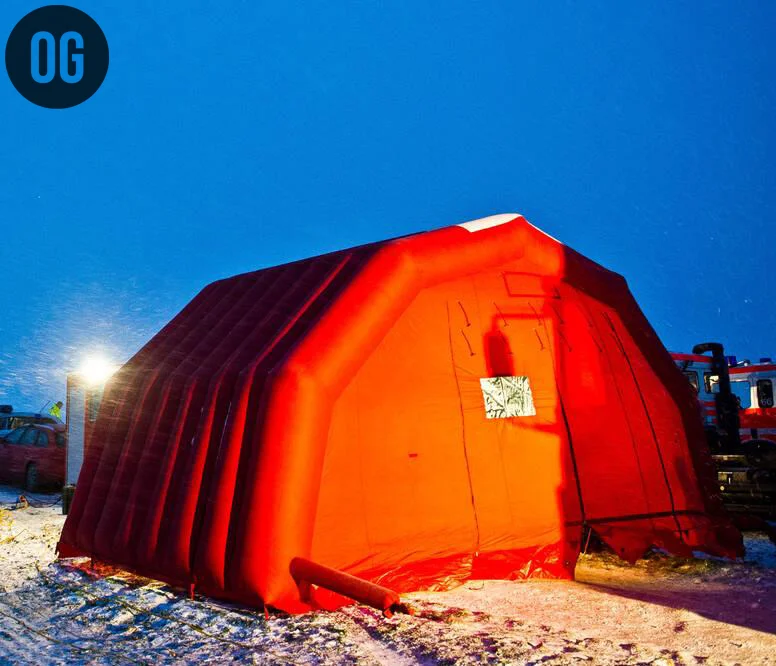
Inflatable Tents
A camping shelter that uses inflatable poles rather than conventional, rigid ones is called an inflatable tent. These tents frequently have air chambers that can be inflated to provide structural support and are constructed of tough, waterproof fabrics like polyester or nylon. For quick and simple assembly, inflatable tents frequently have an air pump or inflation system.
Camping, backcountry travel, and outdoor pursuits are suggested applications for inflatable tents. They are especially practical for campers who value quick and simple installations.
Moderate weather without strong winds or heavy rain is ideal for camping with inflatable tents. While inflatable tents are made to endure mild to moderate amounts of precipitation, they could not offer as much stability and security as conventional pole tents in really inclement weather.
Advantages of Inflatable Tents:
- Easy Setup: The rapid and simple setup of inflatable tents is one of their key features.
- Portable and Lightweight: Compared to traditional pole tents, inflatable tents are often more lightweight and portable.
- Stability: Once inflated, inflatable tents frequently have a solid and robust frame. The air-filled beams or poles ensure a dependable and safe shelter by offering strong wind resistance and maintaining their form.
- Interior Room: Inflatable tents frequently have interior rooms with plenty of headroom. They are perfect for families or groups that need lots of areas for sleeping, storage, and activities since there are no stiff poles in the center to take away useful space.
Disadvantages of Inflatable Tents:
- Puncture Risk: Compared to conventional pole tents, inflatable tents are more prone to tears or leakage. The inflatable beams or cloth may become harmed by sharp objects, difficult terrain, or unavoidable accidents.
- Limited Durability: Despite the fact that inflatable tents are made of sturdy materials, they could not be as strong or long-lasting as tents with traditional poles.
- Complexity of Repairs: Repairing an inflatable tent can be more difficult than repairing a conventional pole tent. It could take extra time and effort to find and repair leaks or holes in the fabric or air beams.
- Cost: Due to their particular design and materials, inflatable tents can cost more than conventional pole tents.

Geodesic Tents
Specialized camping shelters recognized for their distinctive designs and increased stability include geodesic and semi-geodesic tents. These tents make use of a framework of joined poles to create a dome-like structure that disperses weight and stresses uniformly over the surface of the tent.
Geodesic tents are robust and stable structures made of many intersecting poles that form triangles or hexagons. Contrarily, semi-geodesic tents have fewer poles and a more straightforward construction but nevertheless offer more stability than conventional pole tents.
Camping in hard situations like high elevations, exposed terrains, or regions vulnerable to strong winds and heavy snowfall is advised when using geodesic and semi-geodesic tents.
Harsh weather conditions, such as strong winds, heavy snowfall, or extremely cold temperatures, are ideal camping settings for geodesic and semi-geodesic tents.
Advantages of Geodesic Tents:
- Enhanced Stability: In inclement weather, geodesic and semi-geodesic tents provide exceptional stability. severe framework made of interconnected poles that can withstand severe winds, a lot of snow, and adverse weather conditions.
- Durability: This tent’s construction was done with longevity in mind. Their resilience to harsh environments is a result of the interconnected poles and solid structure.
- Interiors with plenty of room: Geodesic and semi-geodesic tents frequently have roomy interiors with usable floor space.
- Versatility: Geodesic and semi-geodesic tents are adaptable and can be utilized in a range of outdoor settings. Both in the summer and the winter, they operate effectively.
Disadvantages of Geodesic Tents:
- Weight and Bulk: Compared to other tent types, geodesic and semi-geodesic tents are often heavier and bulkier. They are less ideal for ultralight trekking or other scenarios where decreasing weight is important because of the interconnected pole structure.
- The complexity of Setup: Compared to standard pole tents, these tents’ complicated pole structures can make set up more difficult and time-consuming.
- Cost: Due to their unique design, long-lasting materials, and improved performance in difficult situations, geodesic and semi-geodesic tents frequently have a higher price tag.
- Limited Ventilation: Geodesic and semi-geodesic tents may have less ventilation than other tent types because of their interwoven pole structure and design.

Car-top/ Roof-top Tents
Innovative camping shelters known as car-top or roof-top tents are made to be erected on a vehicle’s roof. These tents provide a comfortable and elevated resting area, enabling campers to swiftly and conveniently set up camp anywhere their car can take them. They are often constructed with a robust frame to withstand outdoor conditions and are built from long-lasting, weatherproof materials like nylon or canvas.
Camping, road excursions, and outdoor adventures where mobility and flexibility are sought are recommended uses for car-top or roof-top tents. These tents are perfect for campers who wish to set up camp in different places without having to use a standard ground tent setup.
Fair weather with little wind and precipitation are ideal camping conditions for car-top or roof-top tents. Even while many of these tents are made to withstand the elements, they could not offer as much shelter from heavy rain or strong winds as a completely covered ground tent.
Advantages of Car-top/ Roof-top Tents:
- Mobility and Convenience: Car-top/roof-top tents make it simple to swiftly and simply set up camp on a vehicle’s roof.
- Elevated Sleeping Area: By offering an elevated sleeping area, these tents keep campers off the ground and away from bugs, animals, and rough terrain.
- Quick Setup: A simple and quick setup is usually a feature of these tents. The majority of models include a folding or pop-up design that enables campers to have a cozy sleeping area ready in a matter of minutes.
Disadvantages of Car-top/ Roof-top Tents:
- Limited Interior Space: Compared to bigger ground tents, car-top/roof-top tents often have a smaller interior.
- Vehicle Dependency: Car-top/roof-top tent installation requires a suitable vehicle with roof racks or a roof rack system.
- Wind Sensitivity: These tents may be more wind-sensitive, necessitating additional safety measures or setup modifications to guarantee stability.
- Cost: In comparison to conventional ground tents, car-top, and roof-top tents frequently have a higher price tag.

A-frame/ Ridge Tents
A-frame or ridge tents are ancient camping structures renowned for their simple and conventional style. These tents have a recognizable A-shaped design made possible by two poles crossing each other at the top to form a ridge. The tent is then spread out across the ridge and staked and guyed to the ground.
A-frame/ridge tents are suggested for backpacking, trekking, and camping in reasonable weather. They are well-liked by outdoor enthusiasts who value portability since they are lightweight, small, and simple to carry.
Fair weather with little wind and precipitation is ideal for camping with a ridge tent or an A-frame. They give a cozy and pleasant sleeping environment, superior ventilation, and performance in moderate conditions. However, they may not be appropriate for severe weather events like torrential rain or gale-force winds.
Advantages of A-frame/ Ridge Tents:
- Simplicity and Ease of Setup: A-frame/ridge tents are noted for their straightforward and uncomplicated designs, which make them simple to erect.
- Lightweight and Portable: A-frame/ridge tents are often portable and light, making them the perfect choice for trekkers and hikers.
- Cost-effectiveness: When compared to larger or more specialized tent designs, A-frame/ridge tents are frequently less expensive.
- Ventilation: These tents often have decent ventilation because of their straightforward construction. The airflow created by the sloping sides and the open front and back helps to prevent condensation and keep a pleasant inside temperature.
Disadvantages of A-frame/ Ridge Tents:
- Limited Interior Space: Due to their triangular design, A-frame/ridge tents often have a small interior.
- Weather restrictions: Compared to more specialized tent designs, A-frame/ridge tents might not offer the same amount of weather resistance.
- Less Usable room: The A-frame/ridge tents’ sloping sides reduce the amount of inside room that may be used for sleeping.
- Limitations in setup: While A-frame/ridge tents are often simple to erect, personalization and variety may be constrained by their construction.

Bivvy/Bivouac Tents
A bivvy tent sometimes referred to as a bivouac tent or bivouac bag, is a straightforward and portable shelter made for lone travelers or those looking for ultralight camping choices. These tents are frequently small and provide just enough room for a camper to feel comfortable.
Bivvy tents are frequently constructed of waterproof and breathable materials that keep out moisture while still offering protection from the elements.
Backpacking, mountaineering, or any outdoor activity where weight and pack size are important are recommended applications for bivvy tents. They are well-liked by ultralight backpackers who value mobility and light equipment.
For bivvy tent camping, ideal conditions include clear skies or a backup shelter in case of unforeseen weather changes. They work well in moderate weather and can tolerate brief periods of light wind or rain.
Advantages of Bivvy/Bivouac Tents:
- Lightweight and Compact: The lightweight and compact design of bivvy tents is one of its major advantages.
- Easy Setup: Bivvy tents are renowned for being straightforward and simple to erect. Typically, they are made of a single sheet of cloth and have an integrated or separate waterproof floor.
- Greater Mobility: When participating in outdoor activities, bivvy tents’ small design provides you with more freedom of movement.
- Versatile: Bivvy tents are adaptable to a variety of camping settings. They are made to resist different weather conditions, such as snow, wind, and rain, while still offering sufficient protection from the elements.
Disadvantages of Bivvy/Bivouac Tents:
- Limited Space: One of the main drawbacks of bivvy tents is that they are not very spacious. In general, bivvy tents are made to fit just one person.
- Lack of Livability: Because of their simple construction, bivvy tents frequently lack the comforts and features present in conventional camping tents.
- Condensation Problems: When utilizing bivvy tents, condensation can be a serious problem, especially in humid or damp weather.
- Limited Protection: Although bivvy tents provide acceptable weather protection, they may not be as durable as larger camping tents in severe weather.
Different types of tents used for camping in India
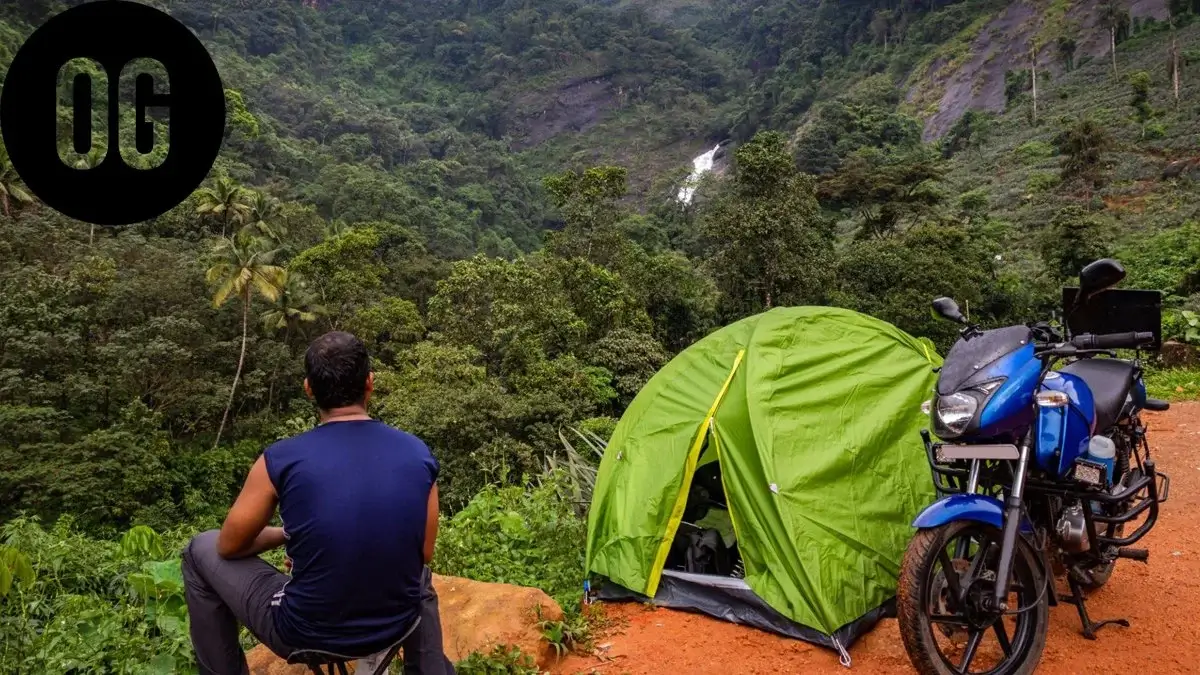
There are numerous tent kinds that can be used for camping in India to suit a variety of purposes and preferences. The following are some of the top tents for camping in India:
Four-Season Tents: A four-season tent is appropriate for year-round camping because India has a variety of temperatures, including cold and snowy places. These tents are made to survive severe weather, such as windy, snowy, and rainy situations. To assure warmth and protection, they provide excellent insulation and sturdy construction.
Tents that are waterproof are necessary since India experiences monsoon seasons that bring forth significant rainfall. Choose tents with strong rainflys and bathtub bottoms to keep water from penetrating the fabric. Excellent water resistance is also offered by tents with sealed seams and strengthened zippers.
Lightweight & Compact Tents: These are the best tents to use if you intend to backpack or go trekking through India’s beautiful landscapes. They are perfect for mobile adventurers because they are simple to carry and put up. Search for lightweight tents made of nylon or polyester.
Air tents, also known as inflatable tents, are becoming more and more well-liked in India since they are simple and quick to set up. Inflatable beams rather than conventional poles are used in these tents, which substantially speeds up assembly. They have roomy interiors and good stability.
Consider the size, build quality, ventilation, and simplicity of setup while selecting a tent. Additionally, it’s critical to spend money on a top-notch tent that meets both your individual camping requirements and the local weather in the Indian location where you intend to set up camp.
Conclusion
We didn’t include other types on our list of different types of tents used for camping because they are less common among hikers and campers. According to our personal experience, the different types of tents used for camping mentioned above are sufficient to meet the needs of any outdoor trip.
However, we want to make it very obvious that you should choose your camping tents carefully because they are one of the most crucial components. You must therefore select the appropriate style of tent for your type of outdoor activities.
However, we are always available to assist you. Simply call us once, and our specialists will be happy to answer any questions you may have. You can also find out more about other essential outdoor equipment that you’ll need for your upcoming expedition. You can learn more here if you’re specifically interested in hiking and camping gear. Our article on the different types of tents used for camping in India is now complete.



